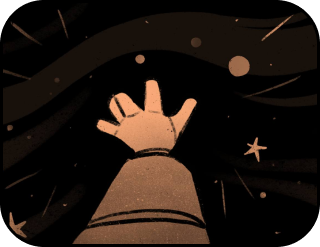Technologies that Changed Music: from Primitive Drum to Digital Studio
Boom… boom… boom… An ancient man is beating a wooden barrel with a stick, striving to attract the attention of his tribe. That is how a drum, the first musical instrument, appeared. Perhaps a drum was the simplest and most effective invention to announce the start of a meal or warn of the approach of crocodiles. The first drum was simply a hole in the ground covered with wooden boards, beaten being jumped on.

In the last hundred years, humanity has made a giant leap, overcoming about a dozen turns of the spiral of technological progress. The world of technology has influenced music, making it accessible, mobile, and global. The history of the development of musical technologies was influenced not only by musicians but also by scientists, experimenters, engineers, inventors, and even the military. We invite you to immerse into the chronicle of technologies that have changed the world of music and the world of musicians.
Due to his love for the telegraph, the phonograph was born
Thomas Edison improved the incandescent lamp, telephone, and telegraph. His interest and love for the latter pushed him to invent the phonograph, wanting to give people the ability to record and listen to audio recordings. The idea of creating the phonograph came unexpectedly to Edison when he pricked his finger
While dismantling his telephone, the inventor noticed that if he held a needle near a metal diaphragm, it left a trace resembling a track. The voice created vibrations, causing the diaphragm to oscillate. Edison pondered while twirling the needle in his hand, which accidentally pricked his finger, and it dawned on him: he immediately understood how to convert mechanical vibrations into sound.
The great scientist envisioned the main application of the phonograph in music, but not everyone could afford to have such a bulky device at home. Special music parlors, where everyone could listen to recordings in a friendly atmosphere, came to the rescue.

The gramophone is transforming into…
The advent of the pathephone delighted both listeners and renowned performers. The pathephone followed the gramophone invented by Emile Berliner, who replaced the wax cylinder with a disc for recording.
The name “pathephone” is owed to the Pathe company, which perfected the device in the early 20th century. The company’s employees solved the problem of the large resonator by placing it in a compact suitcase with clasps and a handle, quickly finding favor with buyers: the pathephone became convenient, mobile, and functional.
One of the first voices transmitted in recordings on the pathephone was the famous voice of Enrico Caruso. Music became accessible and domestic. Before the pathephone, musical works could only be heard at expensive concerts, but with its arrival came the opportunity to listen to favorite songs anytime.
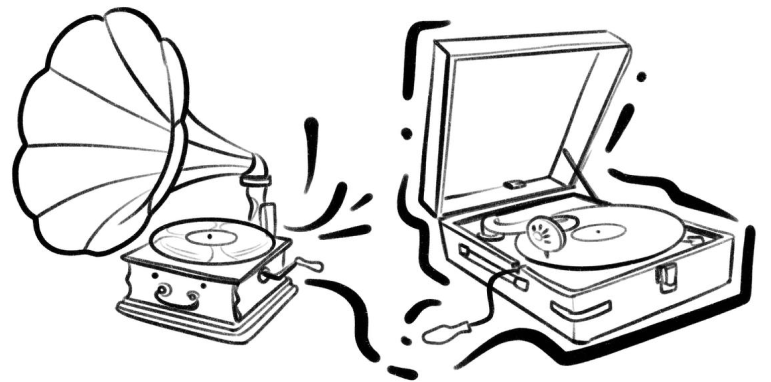
I can’t hear you!
It’s hard to imagine musicians performing without microphones in large concert venues or huge stadiums. Yet, once upon a time, musicians lacked suitable devices to amplify sound. The device with a capsule and vibrating membrane was invented by telecommunications developer Alexander Bell in 1876 and used in the first telephone devices. Later, the device was refined by Emil Berliner, making the sound cleaner and stronger.
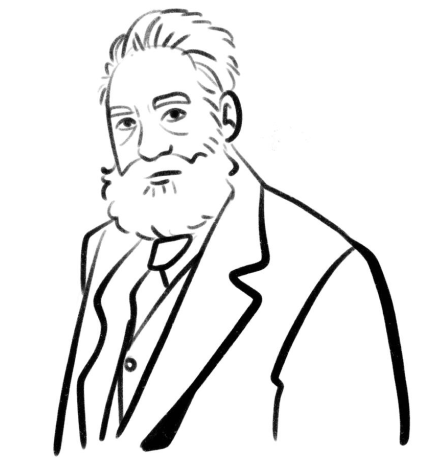
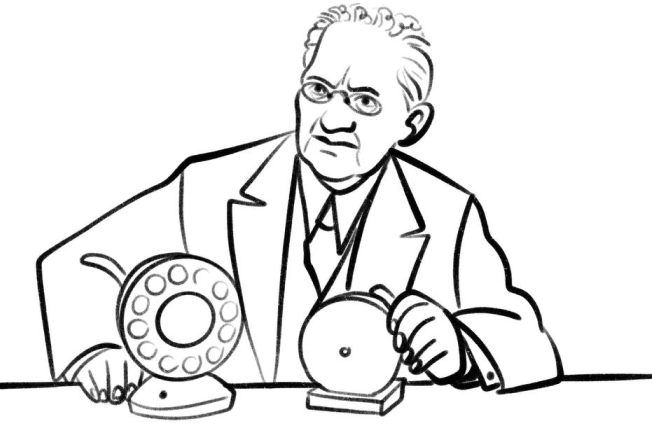
Bell vigorously defended his invention, so he sued Berliner but lost. Then Bell decided to turn his enemy into an ally and invited Berliner to work in his telegraph company. The predecessor of the microphone, which amplified the voice by transmitting it over long distances, was initially called the “liquid transmitter.” Over time, it was improved and acquired new functions.
The term “decibel” is derived from the inventor’s surname, A. Bell. This unit of measurement is used to determine the intensity of sound waves and the magnitude of noise.
The organ – spirituality and mystery
The organ is one of the oldest and largest instruments in the world. Mysterious, fantastical, it literally enchants with its mystical sound.
The predecessor of this majestic instrument was the multi-piped flute of Pan, a god of the ancient Greek pantheon. Another ancestor of the organ is the hurdy-gurdy, which can simultaneously produce several sounds. The hurdy-gurdy and flute have a long and sustained sound, but playing such instruments required significant physical effort and good lung capacity.
The lungs of musicians were saved by the Greek engineer Ctesibius in the 2nd century BCE. He invented the water organ or hydraulis, which became the official predecessor of the modern device. The driving force of the instrument was not the air from the soloists’ lungs but water.
In 1935, Laurens Hammond created a less majestic instrument for smaller spaces, which received the eponymous name “Hammond organ.” It was especially appreciated and loved by jazz and blues musicians, and in the 1960s, by rockers. Modern symphonic organs, where air is supplied by bellows and sound is produced by pipes, can completely replace an entire orchestra due to the power and scale of their sound.

The early synthesizer, or Why do Hitchcock’s “Birds” squeak
Germany was assigned the role of the world’s leading music experimenter. The remarkable personality of Friedrich Trautwein stands out in this direction. While studying at the Heidelberg Conservatory, Trautwein mastered engineering and acoustics, and this blend of opposite passions soon bore fruit.
The Trautonium instrument became the first attempt by a scientist with a doctoral degree to create a new musical instrument. This masterpiece combined two strange devices into one musical ensemble: a piano without keys and a violin with only one wire stretched over an electrified metal plate.
The musician, pressing the wire against the plate, closed the circuit, emitting a sound signal. Moving the finger along the wire from left to right changed the pitch, resembling the sound of a violin. Over time, the instrument was improved, supplemented with tubes filled with gaseous neon, which were later replaced with high-energy gas tubes. All of this was done to stabilize the pitch.
In 1935, Trautwein and his protégé Oscar Sala presented the Trautonium to Joseph Goebbels, Hitler’s Minister of Propaganda. It was electromusic that corresponded to the Reich’s desire to reconcile technology and culture.
For the Trautonium, there were no musical compositions written because it lacked a characteristic recognizable sound; it rather imitated sounds, but the instrument still found its niche.
Its eerie sound became popular in scores for science fiction films and horror movies. It was the Trautonium that provided the amazing set of sound effects for Alfred Hitchcock’s 1963 horror thriller “The Birds.” In this film, there is no traditional musical accompaniment, but there are the screeches and cries of birds, as well as the slamming of doors and windows, thanks to variations of the Trautonium instrument.
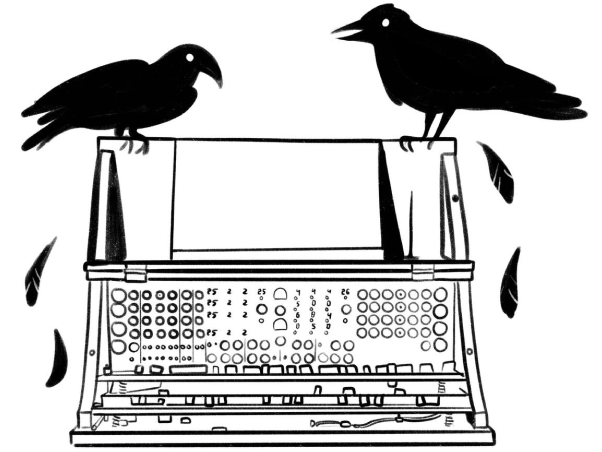
At the 1936 Berlin Olympics, the sounds of the Trautonium’s acoustic system were heard three times in official radio programs accompanying the games.
Cooking up music on the electric frying pan
In the 1940s, all of America was fascinated by big bands. The enthusiasm for musical groups was so strong that even engineers had to get creative and work their magic on electrifying the guitar. Thus, the world’s first electric guitar, the Rickenbacker Electro A-22, also known as the “frying pan,” was born. It earned its nickname in musical circles for its distinctive shape.
The ideologist behind the invention was the engineer George Beauchamp. In 1931, together with Paul Barth, they developed a design consisting of two horseshoe-shaped magnets and six metal cores positioned under each guitar string, all cores surrounded by a coil of copper wire. The clean, powerful electric sound perfectly complemented the human voice timbre.
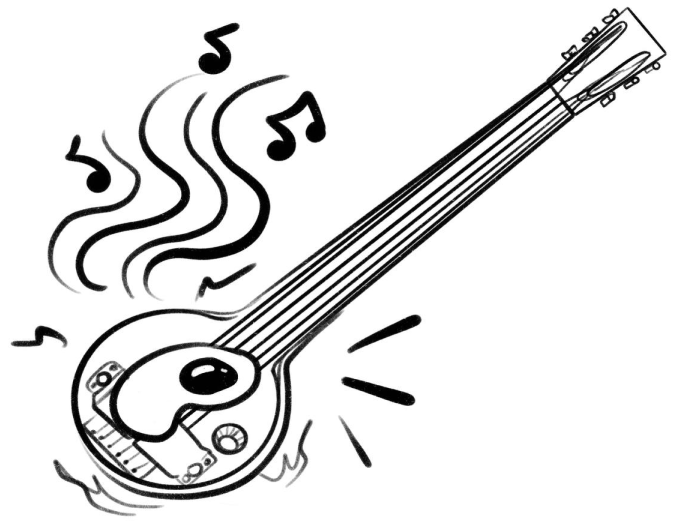
This marked the beginning of the formation of popular music: the invention spurred the birth of new guitar modifications. Year after year, it evolved and improved.
Amplifier – a rocker’s dream
Well, what’s an electric guitar without an amplifier? And a microphone? Alongside the frying pan (or rather, for it), the simplest guitar amplifier under the brand Rickenbacker appeared. It was a wooden box with a small 10-watt speaker. Not much power, of course. Such an amplifier could barely handle even a small concert room, but it was this amplifier that laid the foundation for experiments in increasing the power of the sound source signal and became an integral part of musical art.
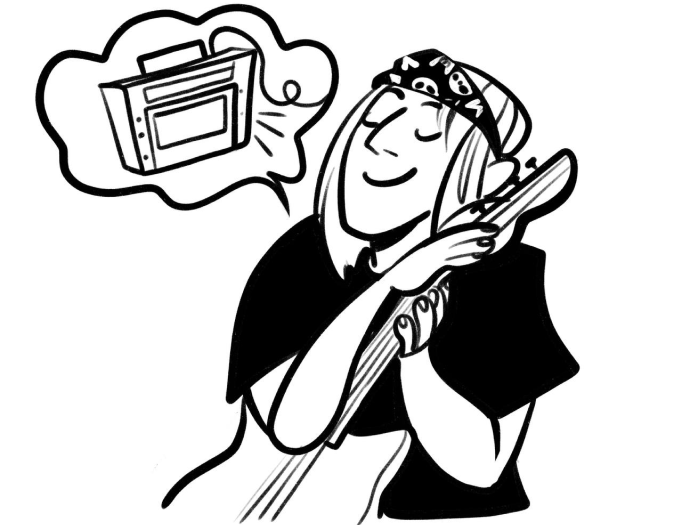
The inventor of the device that amplified the electric signal is considered to be the American Lee De Forest. In 1906, he introduced the vacuum triode consisting of a cathode, an anode, and a control grid placed in a highly evacuated bulb, to the public.
Headphones for the Army
The first headphones were needed by American military as early as 1910. At that time, as is often the case, the owners were people with significant means, or more precisely, fat wallets. Times change, but societal laws do not.
Only in 1950 did music in the ears become a mass phenomenon. At the same time, the radio became a discovery and a New Year’s greeting for Americans.
Headphones and radio initiated the emergence of new psychological phenomena in society: individualism and isolation, the ability to immerse oneself and make personal choices. Psychologists got more work to do.
We owe the appearance of headphones in their modern form to Nathaniel Baldwin, an electrician and Mormon from Utah. It was his version that caught the interest of the U.S. Navy, whereas private entrepreneurs were reluctant to invest in this dubious invention.
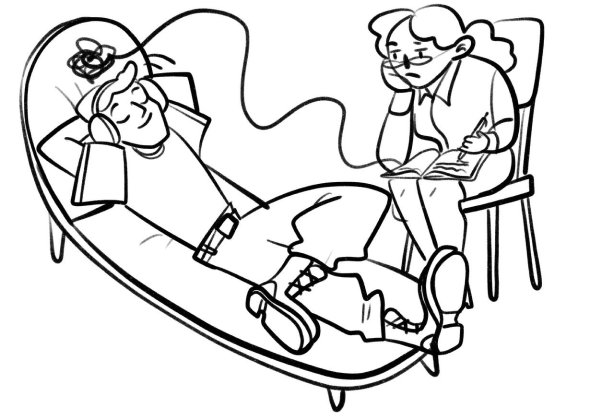
The first headphones weighed over four kilograms, were not worn on the head, and had to be held on the shoulders. The supplier of the device was the Electrophone company.
Partying hard and staying home
Music is that tool that simultaneously brings people together and drives them apart, sometimes creating conflicts of tastes and generations. Music genres change, and along with them, the ways of listening to it evolve. While music used to be more of a collective phenomenon – listened to in specific places, in a special mood – now it has become more intimate.
Music has moved into homes, apartments, cars, phones, and ears. Without leaving the couch, one can indulge in concerts, from chamber singing to rock shows. Without stepping out of the room, one can try their hand at composing music and recording their own compositions.
With the development of global technologies, music isn’t just present; it has already become more innovative and astonishing. But that’s a whole different story…

Your thought is a big bang of ideas. Our journal is its source.
Thank you!


